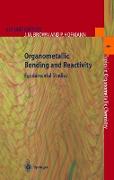Organometallic Bonding and Reactivity
BücherAngebote / Angebote:
General The making and breaking of carbon-metal bonds is fundamental to all the p- cesses of organometallic chemistry and moreover plays a significant role in - mogeneous as well as heterogeneous catalysis. This rather blunt statement - phasises the extent to which a proper understanding of the structure, energetics and reactivity of C-M bonds is at the core of the discipline. In order to accept it, a proper definition of the terms involved is required. Quite simply we define the metal-carbon bond in its broadest sense to embrace carbon linked to transiti- metals, lanthanides and actinides, and main group metals. We do not dist- guish between formally covalent single or multiple bonding on the one hand and q-bonding on the other. In the studies to be described in the following chapters, the emphasis will be on transition metal complexes and insofar as the fun- mentals come under scrutiny, simple metal alkyls or related species (metal al- nyl, alkynyl, aryl, or allyl) will play an emphatic part. The central role of metal alkyls and their congeners and especially the role of their metal carbon linkage in homogeneous catalysis may be appreciated by considering some key reaction steps leading to their formation or breakdown. There follows a few prominent examples of transition metal mediated stoichiometric or catalytic processes: - In homogeneous hydrogenation of double bonds, the stepwise reaction of an q2-coordinated alkene with dihydrogen gives first an alkyl metal hydride, and then the decoordinated alkane by elimination.
Folgt in ca. 15 Arbeitstagen
